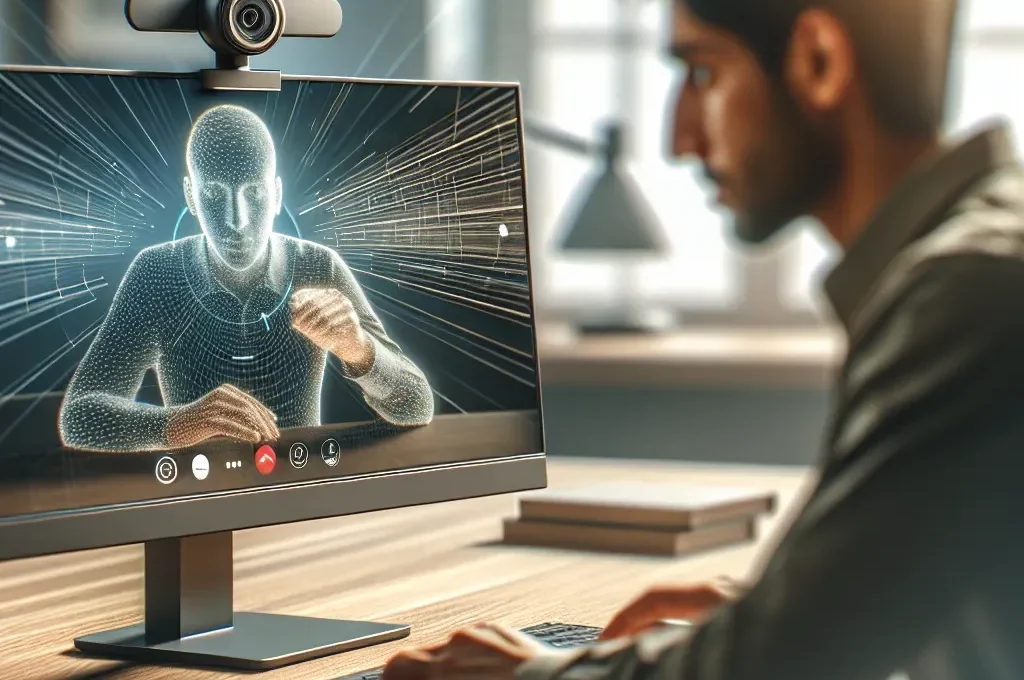In the age of remote work and virtual meetings, the ability to control the zoom function on your webcam has become increasingly important. Whether you’re working from home or attending online classes, being able to zoom in and out can enhance the quality of your video calls by allowing you to frame yourself better, hide background clutter, or even highlight items of interest.
Zooming In and Out with Your Webcam: Software vs. Hardware Solutions
There are multiple ways to enable zoom functionality on your webcam during a video call. These methods broadly fall into two categories: hardware solutions and software solutions. Here’s a quick comparison:
| Category | Solution | Pros | Cons |
|---|---|---|---|
| Hardware | Webcam with built-in zoom | High-quality zoom, no additional software required | More expensive, limited by hardware capabilities |
| Software | Zoom functions in video call apps | Cost-effective, flexible | May require a learning curve, depends on software compatibility |
Hardware Solutions: Webcams with Built-In Zoom
Webcams with built-in zoom functionalities are designed to offer an easy and high-quality zooming experience. These devices usually come with an optical zoom feature, which retains the resolution and clarity of the image when you zoom in or out.
- Logitech Brio: Known for its 4K video capture and 5x digital zoom.
- Microsoft LifeCam Studio: Offers 1080p HD video with smooth and adjustable zoom.
How to Use Built-In Zoom on a Webcam
Using the built-in zoom feature is often straightforward. The process generally involves:
- Connecting your webcam to your computer.
- Opening the webcam’s proprietary software.
- Using the on-screen controls to zoom in and out.
Software Solutions: Zoom Functions in Video Call Apps
If you don’t want to invest in a new webcam, software solutions offer a viable alternative. Popular video conferencing applications like Zoom, Skype, and Microsoft Teams often feature built-in zoom controls or compatibility with third-party software that provides this functionality.
Popular Video Call Apps and Their Features
- Zoom: Offers a digital zoom feature accessible during a meeting via in-app controls.
- Skype: Allows you to adjust camera settings, including zoom, via its settings menu.
- Microsoft Teams: Integrates with webcam software that can provide zoom capabilities.
Third-Party Software Solutions
Besides native controls, you can use third-party software to add zoom functionality to your existing webcam:
- ManyCam: This software offers extensive webcam customization options, including zoom.
- SparkoCam: Provides zoom as well as other advanced features like filters and effects.
How to Enable Zoom in Popular Video Call Apps
Here’s how you can enable zoom functionality in some of the most popular video call platforms:
Zoom
- Host or join a meeting.
- Go to the video settings.
- Use the pinching gesture on a touchpad or mouse scroll to zoom.
Skype
- Go to ‘Tools’ and then ‘Options.’
- Select ‘Video settings.’
- Adjust the zoom level using the slider.
Microsoft Teams
- Open Teams and go to the settings menu.
- Select ‘Devices,’ then ‘Camera.’
- Adjust the zoom level if your webcam software supports it.
Tips for Effective Webcam Zoom Usage
Zooming in and out isn’t merely to bring objects closer or farther; it’s also about improving your video call experience. Here are some practical tips:
- Lighting: Ensure good lighting to maintain video clarity when zoomed in or out.
- Framing: Use zoom to frame yourself appropriately; avoid cutting off parts of your face or body.
- Background: Zoom in to reduce visible background clutter or distractions.
- Eye Contact: Maintain eye contact by positioning the webcam at eye level, even when zoomed in.
Potential Challenges and Solutions
While zooming in and out with your webcam can enhance your video call experience, it does come with potential challenges:
Image Quality
Most webcams use digital zoom, which can degrade the image quality. To mitigate this, ensure your webcam has a high resolution.
Technical Glitches
Software incompatibility or bugs can occasionally cause issues. Regularly update your software to the latest version to minimize glitches.
Overheating
Extended use of zoom features may cause the webcam to overheat. Make sure your device is well-ventilated.
Conclusion
Zooming in and out with your webcam during video calls is a highly desirable feature that can significantly improve your virtual communication. Whether you opt for a webcam with built-in zoom functionalities or rely on software solutions, understanding the benefits and limitations will help you maximize your video call experience. By following the tips and solutions mentioned, you can achieve optimal performance and maintain high video quality.

